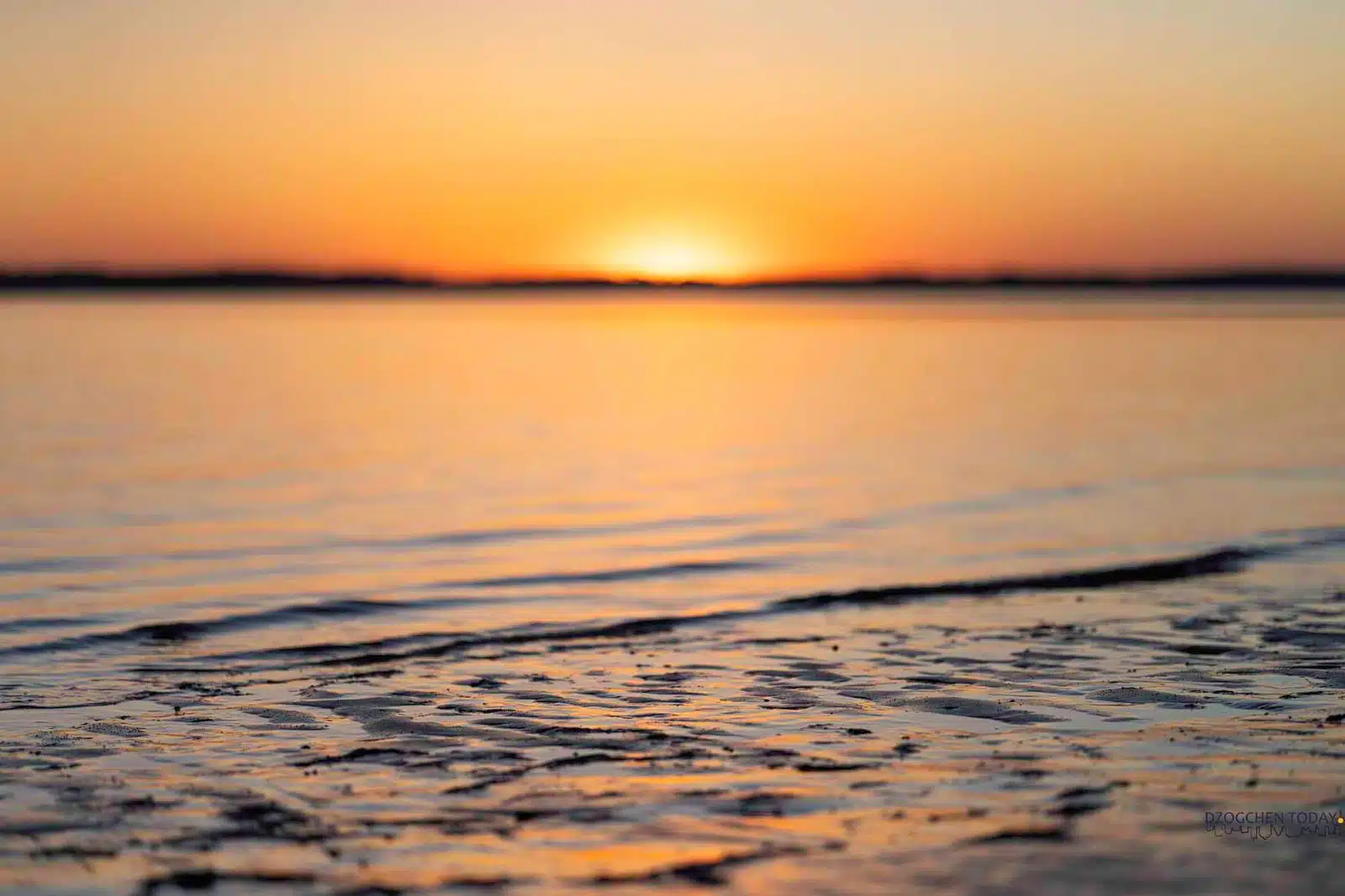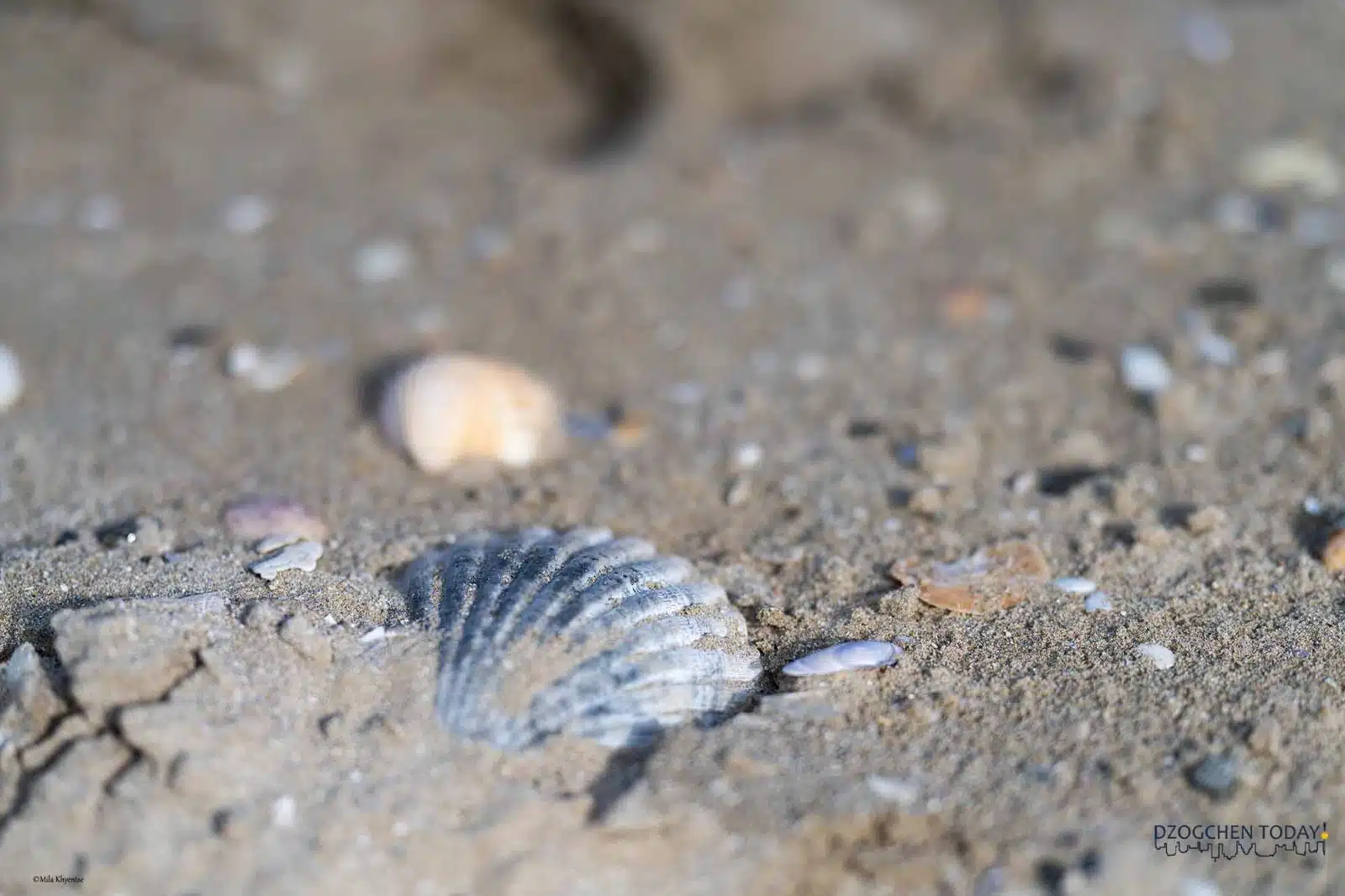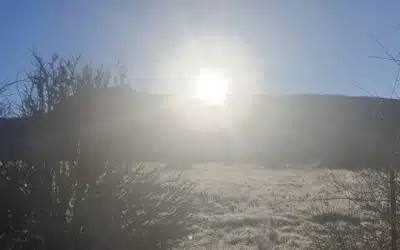High Tide, Low Tide

Written By Johanne Bernard
Blog | Mind and Dzogchen | Reflections on life
In “High Tide, Low Tide”, Johanne talks about the movements of the mind, by observing the natural tide cycle.
Series: The Summer of the Ocean
High Tide, Low Tide
A plastic bottle, worn out from its journey from the other side of the world and carried by a wave, washes up on the sand. At the beach entrance, a sign indicates: “Swimming prohibited due to green algae”. In the sky, airplanes fly by incessantly, leaving white trails like zebra stripes. The temperature rises.
In the distance, a thunderstorm rumbles but doesn’t break. A tropical mist fills the air like a smokescreen. The bees have left the seaside flowers. At the bottom of the ocean, the corals have lost their color. The temperature rises.
“Rising tide, falling tide… This is the natural cycle, unchanging emergence and dissolution, driven by the force of the sun and moon, celestial bodies of its dynamics.”
The beautiful family home overlooking the sea keeps its shutters closed; submerged by the rising waters, its inhabitants have left since long. On the beach, a wave destroys the sandcastle of a small child, who discovers the impermanence of all things and begins to cry. His parents, panicking, immediatly wave a toy in front of him to distract him. The temperature rises.
It’s rocking… and yet, we’re not on a boat; but there we are, barefoot on the beach, standing in front of that “No-Swimming” sign, with the ocean whose horizon has disappeared beneath its heat haze. Although we should be celebrating summer, our hearts squeeze and the ground beneath our feet slips away. Everything shifts and we’re swept away…
Head down, feet up. It’s rocking. Yet the beach beneath our feet hasn’t moved, and the sky looks down at us, motionless. As we struggle through a roller coaster of sensations, thoughts and emotions, the ocean‘s cycle continues. Rising tide, falling tide… This is the natural cycle, unchanging emergence and dissolution, driven by the force of the sun and moon, celestial bodies of its dynamics. Yes, we forgot it for a moment: movement is a natural cycle. If the movements of the world and our sensations, thoughts and emotions merge, it’s because they are of the same essence and nature. Some are reflections of others, themselves arising from the primordial Base, the natural cycle of the mind.
If everything is movement, then how can we stop rocking? By returning to the primordial Base, tradition tells us, by recognizing in all external movement the dynamic expression of our mind, its power of manifestation (rtsal), like the force of the moon and the sun that gives rhythm to the tides. Observing the calm heart of the wave. Recognizing that the upheavals on the surface are only the form of the phenomena of our experience, the radiation of the illusory internal dynamics of our mind (rol). Rising tide, falling tide, high tide, low tide, driving tide under the force of the celestial bodies of compassion.
The water gradually recedes. In the cool dampness of the wet sand, a crab nips our toe triggering a little laugh of surprise. In place of the sandcastle, a multitude of seashells reveal themselves to the young child’s eyes. A mother-of-pearl shell reflects a burst of light dispelling all thoughts, feelings and emotions. The inner ocean calms down. The sky clears. Feet firmly planted and mind clear in the empty dynamics of primordial nature (gdangs).
More Posts
A Garland of Light
In “A Garland of Light”, Johanne talks about the way the lineage of the Great Perfection is passed on, since its beginning.
Stories When the Light Fades
In “Stories When the Light Fades”, Mila Khyentse recalls some of his Master’s Jack-o’-lantern stories told at night.
The ground (gzhi)
This article is the first in a new category designed to provide a better understanding of the essential words and concepts of Dzogchen.





